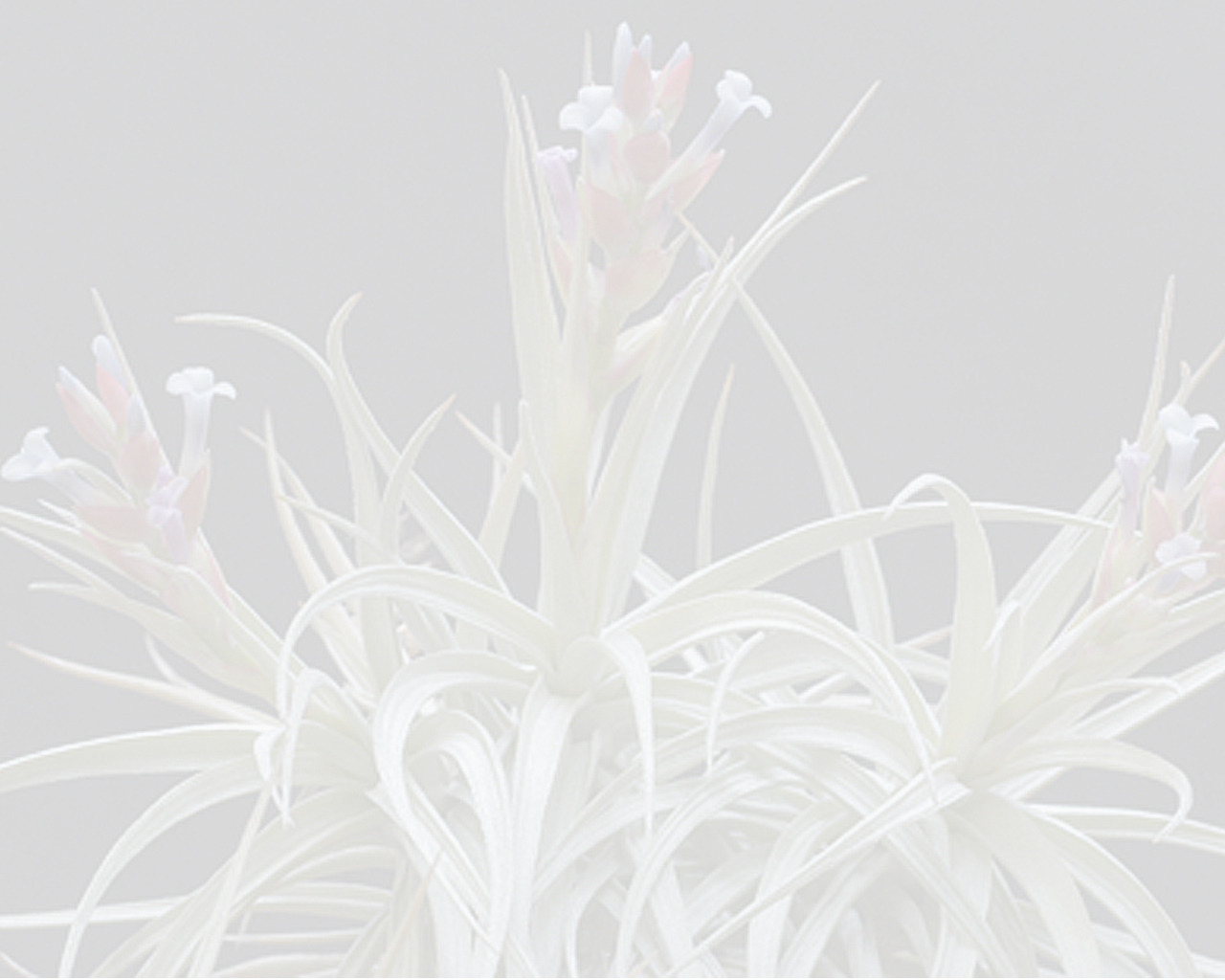

 Tillandsia platyrhachis Mez[as Tillandsia platyrhachis Mez]
Tillandsia platyrhachis Mez[as Tillandsia platyrhachis Mez]Observations: —From Rauh in j Brom Soc 35: 113-7, 133-4. 1985
Following is a provisional key of the T platyrhachis-complex:
1. Floral bracts densely imbricate, at least in their basal half and bright dark-pink; on their dorsal side a deep excavate pouch with broad wings which enfold the adaxial side of the next downwards following flower; these contiguous in their basal parts. Plant up to 2 m high; inflorescence tripinnate
var. magnifica (East central Peru)
- Floral bracts more laxly arranged; rhachis of the spikes visible; plants smaller
. . . . . .2
2. Floral bracts, inflorescence axis and primary bracts strikingly creamy-white; inflorescence bi- or tripinnate; flowers with 0.5-0.7 cm-long pedicels; pouches of the floral bracts smaller and their wings narrow
var. alba (East central and southern(?) Ecuador)
- Floral bracts and axis probably pale pink; plant only up to 60 cm high; floral bracts more dense than in the var. alba; flowers subsessile
var. platyrhachis (Southern Colombia and Ecuador?)
More collections are necessary to prove this classification.
The Peruvian T wagneriana L. B. Smith, known only from northern Peru surely is related to T platyrhachis. Lee Moore collected it first in the vicinity of Iquitos (Prov. Amazonas). Then it was found by Hutchinson and Wright in a mountainous forest on the summit of the Abra Huahuajin near the highway to Montenegro {Prov. Amazonas) at an altitude of 850 meters. We collected T wagneriana there also, growing together with Guzmania lingulata. Both species, T platyrhachis and T wagneriana, belong to the subgenus Phytarrhiza (style short and stout; stamens deeply included and petal blades conspicuous); the floral bracts are of a bright pink (as in the variety magnifica) and the flowers are of a deep blue-violet color. Nevertheless, several important differences exist between both species:
T wagneriana flowers only 40-60 cm high; the laxly bipinnate inflorescence is up to 20 cm long and has only 5- 7 laxly arranged, horizontally spreading spikes These are very short (up to 1 cm) stipitated, strongly complanate, linearlanceolate, up to 12 cm long and 2.5 cm wide and acute. We found only one specimen with obtuse spikes. The rhachis is only narrowly winged by the bases of the floral bracts; these are densely imbricate as in T. platyrhachis var. magnifica, only sublax at the base, strongly carinate, incurved at apex, thin, bright-pink, glabrous and longer than the sepals. The flowers are subsessile, the sepals lanceolate, oblong, acute, 2 cm long, 0.5 cm wide, subfree, the posterior ones carinate, pink and very laxly lepidote inside; petal bases form a narrow, 3 cm-long tube, the deep violet-blue blades are spreading to recurved, broadly elliptic, up to 1 cm long.
The main differences between T. platyrhachis, especially between the var. magnifica and T. wagneriana are the following:
T. wagneriana:
Inflorescence bipinnate; spikes short stipitated, horizontally spreading, acute, strongly complanate, floral bracts densely arranged, bright pink, strongly carinate, longer than the sepals; the posterior ones conspicuously carinate.
T. platyrhachis: (the varieties included)
Inflorescence bi- to tripinnate; spikes long stipitated, erect to deflexed, not strongly complanate, obtuse; floral bracts bright dark pink or creamy-white, densely (var. magnifica) or laxly (var. platyrhachis,) arranged, ecarinate, much shorter than the sepals, the posterior ones inconspicuously carinate.
The differences are so important that, in my opinion, T. wagneriana cannot be considered as variety of T. platyrhachis .Edited from (6---0-2020): Smith & Downs 1977. Tillandsioideae (Bromeliaceae). in Flora Neotropica.